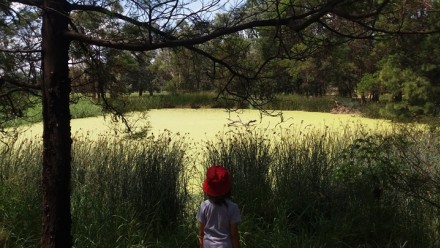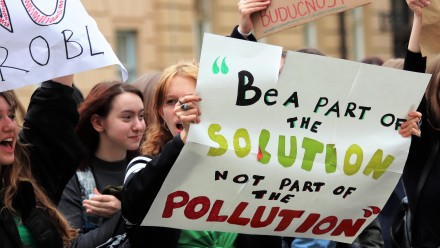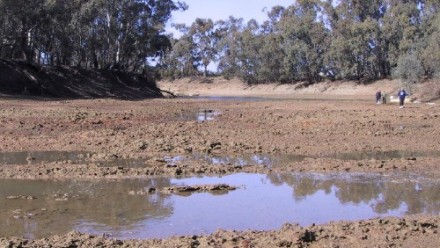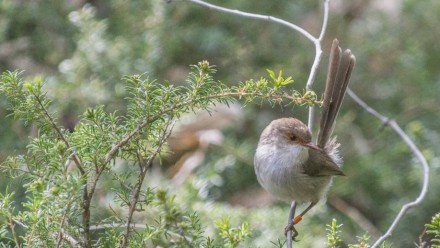2019 Research Highlights
Below is a small sample which demonstrates the breadth of research by our members in 2019.
Research stories
23 Dec 2019
Whilst we've known for many years that intense rainfall and flooding can can lead to disease outbreaks, until recently we weren't aware that there...
23 Dec 2019
Unfortunately, discussions around climate change in Australia have become polarised and this is challenging our ability to develop and implement solutions. ...
23 Dec 2019
In September 2019, hundreds of thousands of school students and their families rallied across Australia, kicking off a day of protest that brought together...
2 Dec 2019
In October 2019, leading ANU water economist, Prof Quentin Grafton, called on the government to declare a water emergency to focus attention on Australia’s...
29 Oct 2019
What happens if we classify climate change as a threat, not an emergency? Liz Boulton from the ANU’s Fenner School of Environment and Society explains how...
15 Oct 2019
In the four years since the Paris climate agreement was adopted, countries have debated the fine print of how emissions reduction should be tracked and...
11 Oct 2019
Warmer temperatures linked to climate change are having a big impact on the breeding habits of one of Australia's most recognisable bird species,...
Interdisciplinary research at ANU
A cornerstone of the CCI mission is to develop climate change solutions via interdisciplinary research. We promote collaboration by researchers from the arts to the biophysical sciences through:
- scholarships for PhD students doing climate research that crosses disciplines
- facilitating interdisciplinary workshops and new collaborations
- working with our members to develop cross-cutting research agendas
One example of this effort in 2019 was our work on climate change and health. Climate change has been identified as the biggest global health threat of the 21st century by the international medical journal The Lancet. In November, we organised a workshop with researchers and grants specialists from three colleges and six schools to discuss opportunities for health and climate research at ANU.
One participant noted “I’ve never been at a workshop at ANU with people from such diverse disciplines before.”
There was a great depth and breadth of research expertise evident as well as extensive networks with peak bodies and government agencies. This provides a solid grounding for furthering this solutions-based agenda. Our engagement efforts have resulted in our membership from the College of Health and Medicine nearly doubling in 2019.
The CCI continues to work with researchers from across the ANU to help progress interdisciplinary research on climate change and health in 2020 and beyond.
The CCI also contributed to the development of the new interdisciplinary Institute for Water Futures (IWF) at ANU. We will contribute a climate change perspective to research on innovative and robust strategies to resolve the water challenges of today and tomorrow.
New books in 2019
The Climate Question – Natural Cycles, Human Impact, Future Outlook
By Professor Eelco Rohling, Research School of Earth Sciences
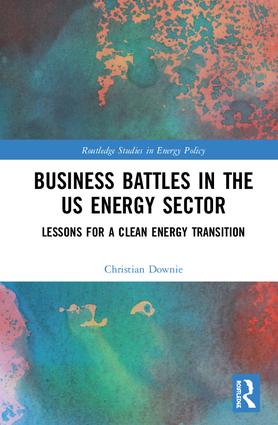
Business Battles in the US Energy Sector: Lessons for a clean energy transition
By Dr Christian Downie, ANU School of Regulation and Global Governance (REGNET)
Climate science
Data from new satellites reveal the alarming extent of the recent drought in Australia and confirms a significant loss of ice in Antarctica. Dr Paul Tregoning, whose team developed software to process the first publicly available data from the satellites and track water availability on Earth, said parts of NSW and Queensland, central South Australia, Tasmania and much of Western Australia were drier in December 2018 than the Millennium drought at the end of 2009. “Our preliminary results show already the drought last year appeared to be worse across a large area of Australia than late 2009, towards the end of the Millennium drought,” said Dr Tregoning from the ANU Research School of Earth Sciences.
Sea levels rose 10 metres above present levels during Earth’s last warm period 125,000 years ago, according to new research that offers a glimpse of what may happen under our current climate change trajectory. Research by Dr Fiona Hibbert, Professor Eelco Rohling and Dr Katharine Grant, published in Nature Communications, shows that melting ice from Antarctica was the main driver of sea level rise in the last interglacial period, which lasted about 10,000 years.
Rising sea levels are one of the biggest challenges to humanity posed by climate change, and sound predictions are crucial if we are to adapt.
This research shows that Antarctica, long thought to be the “sleeping giant” of sea level rise, is actually a key player. Its ice sheets can change quickly, and in ways that could have huge implications for coastal communities and infrastructure in future.
Dr Andrew Glikson has published several research papers in 2019. These include a paper on North Atlantic and sub-Antarctic ocean temperatures: possible onset of a transient stadial cooling stage. Another paper, The methane time bomb, finds that during much of the upper Cenozoic, the accumulation of organic matter in Polar Regions, as well as in bogs in tropical and subtropical zones, has created large reservoirs of methane, the most potent common greenhouse gas, vulnerable to release upon a rise in temperature. The triggering of methane release induced by anthropogenic transfer of carbon to the atmosphere is potentially leading to a major shift in state of the terrestrial atmosphere and habitats.
Another paper finds that the geological record displays a close correspondence between paleo-CO2 levels and paleo-temperature trends, allowing the identification of environmental factors that underlie the evolution and extinction of species. The anthropogenic extraction and transfer from the Earth’s crust to the atmosphere of carbon, including coal, oil, tar sand, shale oil, methane gas, coal seam gas and other forms of hydrocarbon, constitutes the most significant shift in composition of the atmosphere since the PETM hyperthermal event (~56 Ma) and the K-T boundary extinction (~66 Ma), with worrying consequences for the planetary habitat.
Climate change and drought
Research by Professor Matthew Gray, Dr Boyd Hunter, Associate Professor Ben Edwards and Dr Shuvo Bakar is focussed on understanding the human dimension of drought. The goal is to better understand the perception of drought using a self-report measure from a survey of rural and regional Australia conducted in 2007 during a prolonged period of widespread drought. The researchers establish a relationship between local climatic variables and survey data using a novel Bayesian spatial ‘spike & slab lasso’ method and estimate a drought index for regional areas over time. This opens up the possibility for a more comprehensive understanding and analysis of the social impacts of drought even when direct evidence on drought is not collected in the survey being analysed.
Climate change and biodiversity
Dr Steven Lade co-authored a paper in Global Sustainability on how maintaining biodiversity maintains carbon storage and mitigates climate change. The paper counters the paradigm that biodiversity is just a co-benefit of protecting forest carbon.
Dr Sarah Milne co-authored two articles discussing how hard it is to implement climate change mitigation through the REDD+ (Reducing Emissions from deforestation and forest degradation) ) mechanism in tropical developing countries. These include a review article with colleagues including Sango Mahanty, Peter Kanowski, Phuc To and Maylee Thavat, entitled “Learning from actually existing REDD+”. This article examines findings from qualitative, ethnographic work on REDD+ around the world (53 cases). It shows how REDD+ implementation has been fickle and highly problematic, due to “side-effects” like the enhancement of state power at the expense of indigenous rights in post-colonial settings.
She has also published an analysis of one REDD+ project in Cambodia, which critiques the bureaucratic demands and performative nature of Voluntary Carbon Standard certification, entitled “Value and bureaucratic violence in the green economy”. Amid the “box-ticking” that’s required for generating carbon credits, illegal logging and indigenous dispossession can continue apace: REDD+ credits therefore need to be scrutinised.
Loss and damage as a result of climate change
PhD student, Mel Pill, has published a paper discussing the suitability of insurance schemes to address loss and damage from climate change. It looks at the advantages and disadvantages of making use of such schemes through a justice lens and concludes that issues such as gender, the concept of ‘Common but differentiated Responsibilities as enshrined in the climate change convention, human migration and economic injustice are not addressed.
Climate change adaptation
The NSW Environmental Trust (within the Office of Environment and Heritage) gave funds to the CCI and The University of Technology Sydney (UTS) to work with famers in the Southern tablelands to provide timely, relevant and useful information on climate and climate adaptation options. We worked with farmers to develop and test climate change heuristics (rules of thumb) relevant to them and the broader NRM user community .
In August 2019, we ran a second workshop in Crookwell with16 landholders. Dr Steve Crimp, Prof Mark Howden and colleagues from UTS presented modelling of indicators of change of season and how these are predicted to change under climate change. Change of season was identified as a key event that would determine how grazing systems are managed in this region. Landholders gave feedback on how they would like results presented.
The Transformative Adaptation Research Alliance (TARA) is an an international network of researchers and practitioners dedicated to the development and implementation of novel approaches to transformative adaptation to global change. TARA includes nine Fenner School staff, HDR students and affiliates. In 2019 they published a major study on adaptation pathways and transformative adaptation in the French Alps, adapting land restoration under climate change and on re-framing decisions about water resources under climate change in Tanzania and the Murray-Darling Basin.
Professor Craig Moritz published a paper in Current Biology on whether and how species can evolve to meet the challenges of climate change.
Dr Tayanah O’Donnell published a paper contrasting land use planning for climate change adaptation: a case study of political and geo-legal realities for Australian coastal locations.
Climate economics and policy
Associate Professor Paul Burke, Rohan Best and Professor Frank Jotzo published a paper studying the effect of closing coal-fired power stations on local unemployment in Australia. The results highlight the need for an ongoing focus on the social aspects of the transition to low-carbon energy.
Climate change communication
Research by Inez EP Harker-Schuch, Associate Professor Frank Mills, Dr Steven Lade and Dr Rebecca M Colvin explores how 3D interactive digital game can improve climate literacy in the 12-13-year-old age group.
Many scientists want to engage with policy-makers but what do policy-makers value about these interactions? Research co-authored by Dr Ruth O’Connor, Prof Lorrae Van Kerkhoff and Prof Joan Leach suggests that legitimacy in decision-making and access to research and the knowledge of peers is critical. This requires both policy-makers and scientists to communicate competently.
The impacts of climate change are often presented at national and global scales, making it difficult for people to reconcile with their local lived experiences. My Climate 2050, co-created by Assoc Prof Mitch Whitelaw and Dr Geoff Hinchcliffe provides highly localised climate projections to offer a more personalised view of how climate change may affect people in their home towns and regions. Drawing on data from the QLD Government’s Long Paddock project, My Climate 2050 offers projections for over 4000 sites across Australia.
Carbon dioxide removal (negative emissions)
Research, led by Dr Bec Colvin and various ANU authors, explores the social and political dynamics that contributed to climate change becoming politically polarised, and explore how these dynamics may be understood as lessons to avoid the same polarisation on negative emissions.
A new research hub aims to regenerate the landscape, transform Australian agriculture and draw down carbon at the same time. This research is being led by Professor Justin Borevitz from the Research School of Biology, Professor Eelco Rohling from the Research School of Earth Sciences and Dr Aurore Chow from the College of Asia and the Pacific.
This hub aims to unite revolutions in precision and regenerative agriculture to regenerate degraded landscapes. The goal is to connect soil rehydration and remineralisation with cropping, grazing and tree planting strategies to deliver climate resilience. We seek to:
- design and build demonstration farm sites for precision regeneration
- develop, scalable, interactive models for regenerative farm planning based on ground and satellite data
- gather and analyse social and economic factors necessary for adoption to guide regional and national deployment.
The goal is to transform the agriculture industry to ensure production, build resilience and natural capital.
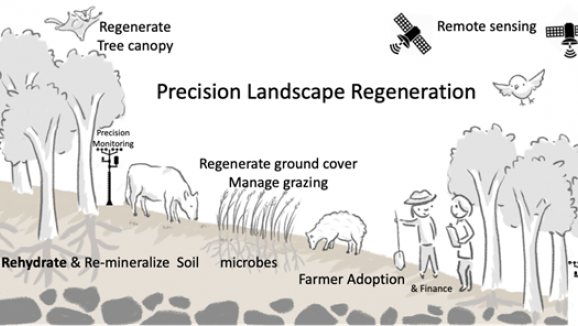
Advances in agricultural science can help to provide food security, and healthy livelihoods by efficiently drawing carbon into soils. Methods including soil rehydration, land cover restoration and rotational grazing have been demonstrated. Precision tools will be developed to effectively deliver these methods to provide resilience and ensure productivity. This mixed soil-agriculture-forestry management system will rebuild cover and habitat along vulnerable creeks and ridges to buffer agro-ecosystems for extreme drought, fires and floods. National plans to regenerate and protect landscapes will be modelled to scale rapid deployment.
Climate change and cities
Research co-authored by Professor Xuemei Bai presents three routes for expanding knowledge on global urban areas: mainstreaming data collections, amplifying the use of big data and taking further advantage of computational methods to analyse qualitative data to gain new insights. These data-based approaches have the potential to upscale urban climate solutions and effect change at the global scale.








